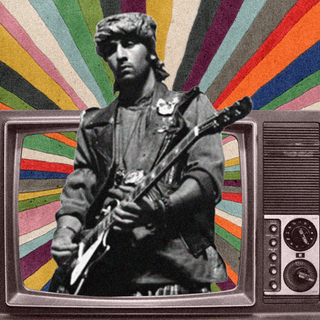
Why There’s More Distraction, Less News in the Media
Breathless coverage of a star-kid’s arrest over farmers’ deaths and Pandora Papers is an example of political ‘media priming.’

A lot has happened in the last 48 hours. A dossier called the Pandora Papers was leaked, revealing the ways the worlds’s wealthiest people hide money. A ruling party minister’s son mowed down and killed four protesting farmers. Hindu extremists decapitated a Muslim man for his relationship with a Hindu woman. However, the one news item that has permeated all news channels in the country is the one about a Bollywood star Shah Rukh Khan’s son, Aryan Khan, having allegedly partaken in some recreational drugs at a party.
The latter has made its way into WhatsApp group forwards (even before the blackout took matters into its own hands), is the subject of primetime debate, and is a trending topic on social media. But it’s clear that something is awry: Khan was one among hundreds at the party and seems to be dominating the headlines solely due to his name.
As a result of all the commotion, there is hardly any conversation about more urgent incidents. Mass murder, corruption, and suppression of political opponents are issues that would make headlines in any other democracy. But this is not the case here because it has its basis in a theory about the media called the ‘priming effect,’ variously known as ‘political media priming’ or more broadly, ‘media priming.’
A recent study defines primes like this: “priming is the presentation of a stimulus and the effects caused by that stimulus, which can include subsequent changes in beliefs, attitudes, and behaviors. A prime, then, is the portion of the stimulus that leads to these effects.” The same study notes that “Priming operates through the associative activation of memory, where information can trigger the activation of other ideas from memory in a ‘cascade of activity.’”
The theory broadly suggests that in the media, some issues gather more steam than others, which impacts political outcomes. Researchers Peters, Iyengar, and Kinder first proposed the idea in 1982 to describe how people who do not have all the information on hand are likely to make electoral or political decisions based on what first comes to mind. And what comes to mind is what the media overwhelmingly focuses on, at the expense of many other things. The researchers argue that TV news programs directly affect how much weight viewers give to various issues, especially when only some take up a chunk of the evening news.
A much earlier study put it like this: “the mass media may not be successful much of the time in telling people what to think, but the media are stunningly successful in telling their audience what to think about.”
Related on The Swaddle:
How ‘Political Gaslighting’ Undermines the Truth
In the present scenario, the Aryan Khan case is powerful enough to stick for a few reasons. A paper published in the International Journal of Public Opinion Research found that the media’s framing of issues in moral or ethical terms can “prime voters to (1) make attributions about candidate integrity, and/or (2) evaluate other political issues in ethical terms.” It is reasonable to argue, therefore, that it is no coincidence that news about a young adult partying has overshadowed all else in the heels of significant state elections. Further, attributing moral degeneracy to a famous movie star’s kin has a particular moralistic messaging implicit in it. With government bodies seen to be taking strict and robust action to stop such debauchery, governments can claim the moral high ground as taking a hard line on drugs and illegal activities.
Why this happens has roots in political and cognitive psychology. Research has shown that the frequency, intensity, and positivity or negativity of ‘primes’ all significantly impact an individual’s judgments based on how their cognitive memory is activated.
Moreover, research has also shown how governments strategically time unpopular or controversial political actions to execute them when something else in the news is distracting voters. A study on the timing of US Presidential Executive Orders (EO) found that Presidents time their controversial EOs right when an unrelated issue dominates the news cycle. Some have called this the ‘politics of distraction,’ and it often works.
Consider that a few days before the Narcotics Control Bureau’s ‘raid’ on the cruise ship in which Aryan Khan was supposedly taking drugs, NCB seized 3,000 kilograms of heroin at the Mundra Adani port, Gujarat. Still, the incident quietly receded out of public discourse. Or the fact that the government arrested political opposition leaders while they were visiting aggrieved farmer families affected by the violence.
The overwhelming focus on Aryan Khan’s personal life, WhatsApp chats allegedly pointing to international drug trafficking links and other lurid details prime media consumers into a drug scare. This is similar to last year when actor Rhea Chakraborty’s life was dissected for similar reasons.
All the while, several matters of fundamental importance to voters remain a footnote in national and regional news channels. It would seem that with pro-government media having found its newest scapegoat, it is unlikely that media consumers will be thinking about much else. When governments and media manipulate individual cognitive processes on a mass scale, the people are not entirely to blame.
Note: An earlier version of this article incorrectly stated that a minister’s son mowed down and killed eight, instead of four, protesting farmers. This was incorrect and the article has been updated.
Rohitha Naraharisetty is a Senior Associate Editor at The Swaddle. She writes about the intersection of gender, caste, social movements, and pop culture. She can be found on Instagram at @rohitha_97 or on Twitter at @romimacaronii.
Related


Can We Move On: From the Trope of the Male Artist Whose ‘Genius’ Gives Him a Pass to Be a Jerk
